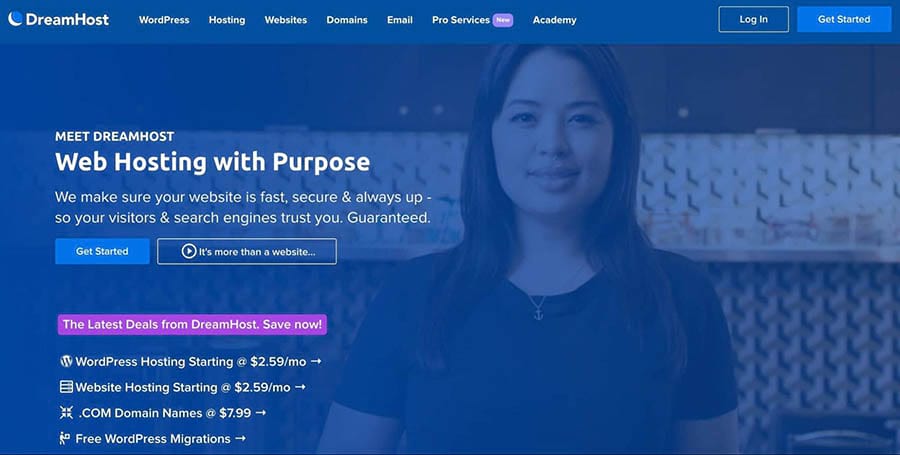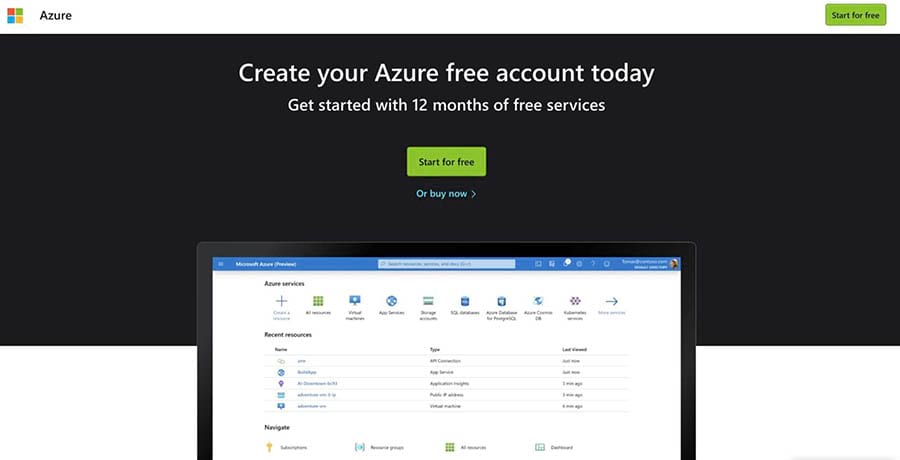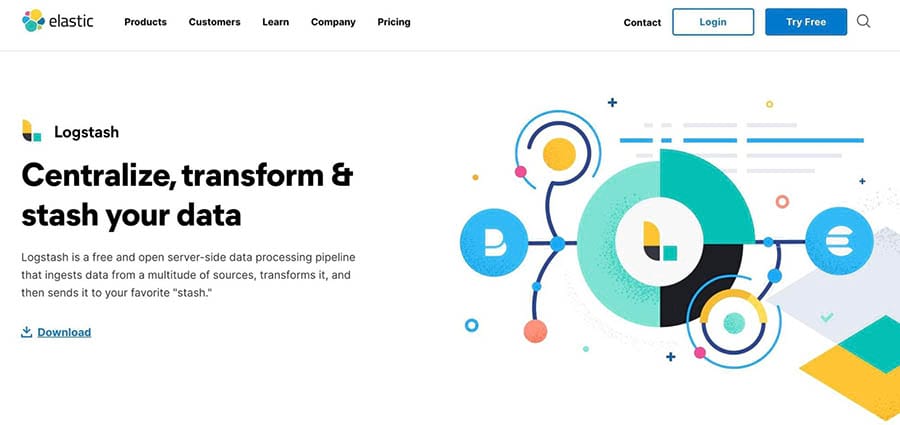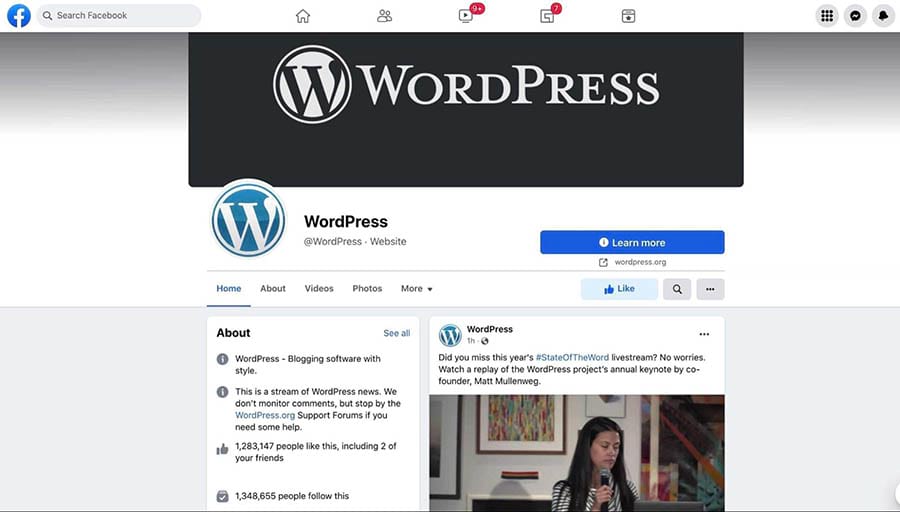When looking for a new piece of software, it’s easy to fall back on proprietary options. However, there’s another (and arguably better) way.
Whether you’re a hobbyist, entrepreneur, or business owner, open source has much to offer. By opting for open software, you can positively impact this vital and innovative community.
In this post, we’ll look at the huge role that Free and Open-Source Software (FOSS) has played in the DreamHost story. We’ll then share three easy ways to support FOSS this February — and beyond. Let’s get started!
Related: 10 Ways to Make Your Website Accessible
DreamHost’s Open-Source Beginnings
Open source is in our blood and has powered every aspect of our services since the very beginning. DreamHost was founded in 1996 by four California undergraduate students who bonded over a mutual love for open-source tech and discovering new tools. With barely a dime to spend, the four created a web server running Debian Linux, Apache, and Perl.
This became the foundation of a business that hosted websites on top of free software — and DreamHost was born! Our business would not have been possible without open source, and today open software remains at the heart of many DreamHost systems.

We respect our customers’ rights to the information they create, and that includes making sure they’re not locked into any of our services. Open software is such a vital aspect of our business that it’s even encoded into our core values as Embrace Open Source.
Related: The Best Online Resources to Learn How to Code
The Rise of the Black Box Cloud
The era before cloud computing was a golden age for the open internet. The tech landscape was dominated by some of the best examples of open-source technology. This includes Linux, Apache, and MySQL, plus languages like PHP, Perl, Python, and Ruby.
While the early days of cloud computing were exciting and revolutionary, it was also somewhat of a black box. The software and systems that power Amazon Web Services, Microsoft Azure, and many other cloud platforms were closed by design.

This left many users in the dark about implementing the most critical part of their application stack. So while we were excited about what the cloud had to offer, we didn’t want to live in a future dominated by black box technology. That’s why we decided to build our customers what they wanted, using best-of-breed open-source software.
DreamCompute: Partnering With OpenStack
From the very beginning, we built the DreamHost platform on top of open-source tech. However, in 2014, we took things one step further and launched our DreamCompute service.
DreamCompute is a public cloud computing service that’s designed to scale. It’s also built with open source at its very core.

Based on the OpenStack cloud computing platform, DreamCompute makes heavy use of open software. The DreamCompute storage nodes run Ceph, the open source and massively distributed fault tolerant storage system.
In addition, the entire system is managed by the Chef automation software, plus other open-source tools. This includes the collectd daemon and Logstash data processing pipeline.

With DreamCompute, we set out to put more power in the hands of our customers than they’d ever had before — and we believe that we achieved that. However, OpenStack is more than just the heart of our DreamCompute service.
We joined OpenStack early in its life, committing code, financial support, and leadership to the project. We joined the OpenInfra Foundation as a Gold member, and DreamHost CEO Simon Anderson was elected to represent us on the OpenStack Foundation Board of Directors for multiple consecutive years.
Even today, our team is releasing new open-source frameworks, tools, apps, and other projects all of the time. For more information, check out our GitHub repository.
Related: The Difference Between WordPress.com & WordPress.org
Open Source Officially Powers 43% of the Web
No discussion about open source would be complete without mentioning the world’s most popular Content Management System (CMS). At DreamHost, we’re proud to have WordPress Core developers on our team while actively contributing to the WordPress Open-Source Project.

WordPress is an example of world-class open-source software, but that doesn’t mean this platform is automatically accessible to everyone. To help bring the power of open source to the masses, we designed our DreamPress hosting plan.

This managed WordPress service removes much of the technical complexity of running a successful website. In this way, we’re making the world’s most powerful open-source CMS available to more people than ever before.
How to Support Open-Source Software in 2022 (3 Ways)
DreamHost has taken a lot from open source over the years, and we’re not the only ones! If you’ve ever downloaded a project from GitHub, built a WordPress website, or switched from proprietary software to an open alternative, then February is your chance to give back. Here are three ways to support FOSS this February.
1. Use and Promote Open-Source Software
The best way to support open source is to use it! This means actively seeking out open alternatives to your favorite proprietary software.
If you’re using open projects in your free time, then this is a great start. However, if you really want to contribute to the community, you can always advocate for its use in formal settings, particularly at your workplace.
Unlike property software, you can often download and install open-source code on your own server or company data center. In a climate where privacy and data security are a huge concern, this is definitely worth mentioning to your boss.
If you have a particular piece of proprietary software in mind, then finding a replacement may be as simple as heading to your favorite search engine and typing: “open-source alternative to X”. There are also entire directories dedicated to recommending open-source replacements. The Awesome Alternatives list and crowdsourcing AlternativeTo website are two popular resources.

Once you’re using open-source software, you can go one step further and become an evangelist. Despite the religious connotations, today, the term evangelist simply means any person who is an enthusiastic fan of a product, brand, person — or even open-source software.
Simply engaging with an open project on social media can help raise awareness. If you run your own blog, then you might consider publishing tutorials or articles about your favorite project.
Even if you don’t run your own website, there are plenty of tech-focused sites that accept guest submissions. All of these simple acts can help spread the word and introduce more people to your favorite open project.
Related: How to Promote Your Blog on Social Media
2. Get Involved in the Community
Some successful open-source projects are able to fund full-time staff. However, many projects rely entirely on volunteers. This means there are always opportunities to become a valued member of the open-source community.
To start, you may want to consider following your favorite project across all of the major social networking sites. This includes Twitter, YouTube, Slack, and Facebook.

From here, you can connect with other members of the community and spot opportunities to get involved. This could be anything from supporting an upcoming meetup or webinar right through to answering a question that someone has posted on the project’s official Facebook page.
In addition, open-source projects often feature prominently on question and answer boards such as Stack Overflow and the Quora site. You may even find a board dedicated to your chosen program.
By visiting these boards regularly, you can help other users resolve issues that they’re having with the software in question. This can improve their experience, which will make them more likely to continue using the program. They may even become enthusiastic open-source supporters themselves.
You can minimize the number of complaints and queries that get escalated to the project’s development team by resolving these questions. This leaves them free to focus their efforts on improving the core software.
Related: Want to Translate Your Site? Here’s the Ultimate Guide to Website Localization
3. Become a Translator
Research suggests that 74 % of internet users speak a language other than English.
If your favorite open-source project doesn’t support multiple languages, it may struggle to attract an international audience.
If you’re multilingual, you can help a project connect with an entirely new audience by offering your translation services. Even users who speak multiple languages will usually appreciate being able to enjoy software in their native tongue. In fact, 65% of consumers prefer to access content in their first language. By translating a project into one or more additional languages, you can help boost its appeal.
For instance, you might translate self-help resources, such as the official documentation, blog posts, and FAQ pages, or user guides. However, these open projects may also need someone to translate User Interface (UI) elements, such as the labels and onscreen tooltips that help people interact with the software. All of this can be invaluable for improving the user experience and helping your favorite project find its spot on the world stage.
Conclusion
At DreamHost, we’re excited to continue contributing to open-source software throughout 2022 — and beyond. However, anyone can take steps to support their favorite open projects.
With this in mind, let’s quickly recap 3 easy ways to help the open software community:
- Use open-source alternatives when possible, and promote your favorite programs.
- Get involved in the community by following open projects on social media and answering questions from users.
- Become a translator for your favorite open project.
When it comes to open software, WordPress is a huge success story. If you want to find out why this platform powers almost half of all websites, our shared website hosting is the fastest and easiest way to get started with WordPress.
Cloud Computing and DreamHost
When you partner with us, your website is in good hands! Our services pair friendly expertise with top-notch technology to give you all you need to succeed on the web.

The post FOSS February (3 Ways to Support Open-Source in 2022) appeared first on Website Guides, Tips & Knowledge.
source https://www.dreamhost.com/blog/ways-to-support-open-source/

No comments:
Post a Comment